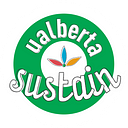The language of risk, the business of sustainability
Engineering professor Lianne Lefsrud’s interdisciplinary edge.
By Trevor Chow-Fraser
Originally published in March 2019.
Lianne Lefsrud’s story starts out like that of many other UAlberta engineering graduates. Throughout the ‘90s and early ‘00s, she worked in oil and gas, for the railway and in consultancies, eventually working with the professional regulator. But during this time, she made an uncomfortable discovery.
“I realized that companies managed risk in a very ad hoc basis, sometimes even a trial and error basis,” said Lefsrud. “That really bothered me.”
It didn’t turn her away from the worlds of engineering and oil & gas. Instead, she returned to the University of Alberta for a PhD in business strategy where she could really dig into the study of risk management. She now works at her alma mater as an assistant professor in engineering safety and risk management, where she recently spoke with Sheena Wilson, Associate Director (Research) for the Sustainability Council.
Linking sustainability to risk management
“I’m very interested in how companies make decisions with regards to risk, with regards to sustainability more broadly, and how can we motivate change within companies,” said Lefsrud.
Lefsrud treats risk management as much more than just a technical issue, or even a worker safety issue. In her thinking, risk management is a core part of thinking through the multidisciplinary and long-term dimensions of any business challenge. Which is to say, it’s ultimately about sustainability.
“Companies that are safer are also more environmentally sustainable, also more productive and more efficient,” said Lefsrud. It’s this nice kind of twist on the triple bottom line that allows her to connect so well with those in business.
“If we can talk about sustainability, but using risk language, then that somehow makes it more palatable or digestible by companies — because [risk is] a conversation that they have around the C suite,” said Lefsrud.
With her common language with others in heavy industry, she has succeeded in bringing people into her research who would otherwise be a lot more wary. For instance, her research on oil sands fatalities includes hundreds of interviews with all of the major operators.
“They’ve been nothing but welcoming and nothing but open, to say ‘how can we do our business better? How can we be more environmentally sustainable, safer for the public as well as our workforce, and then more efficient and effective as a result?’”
Alberta’s geothermal opportunity
Having heard from some many workers and industry executives, as a result of her research, she is actually quite optimistic about the potential for Alberta to transition to renewable energy and meet our climate change targets.
“I think there’s a lot more change happening at the grass roots than is readily recognized. And you know, there’s some really interesting things happening at the industry level. I see the major oil and gas players making major investments, buying up solar, buying up windmills,” said Lefsrud.
And there’s an untapped opportunity to develop geothermal energy too. Alberta has upward of 155,000 suspended oil and gas wells — sites that were drilled for fossil fuels, but have yet to be cleaned up. Some of these wells belonged to bankrupted companies. That could leave taxpayers on the hook for $8 billion according to the C.D. Howe Institute.
“Instead of considering [these wells] to be a liability, how do we transition them to be an asset?” asks Lefsrud.
Future Energy Systems has several research teams working on the technical side of this challenge — exploring the technology of turning old wells into geothermal power stations, using hot sub-surface water to generate electricity.
Lefsrud’s project, on the other hand, considers the economics and the human reception of deploying such new technology at scale. It’s an example of how an interdisciplinary researcher like Lefsrud can really shine in environmental fields.
“Having those conversations of the humanities, the social scientists with engineering is absolutely fundamental because the other sees what the other doesn’t,” said Lefsrud. “As an environmental engineer, I also have to think about the socioeconomic impacts and how do you do those consultations with communities to develop something that better fits their needs while also being more sustainable.”
If geothermal energy takes off in Alberta, it will provide clean, renewable energy especially in rural communities that are already facing an energy deficit in some cases. Plus, it will address this looming public liability with implications to the public purse, as well as human and environmental safety.
Can Alberta do it? Lefsrud is optimistic about her home province.
“This is a great province to live in,” said Lefsrud. “Alberta has always had a ‘can do’ attitude, which is quite useful and powerful. And I think that sort of permeates that ethos of the entire province in a really wonderful way.”
